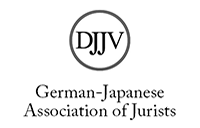Die Kumulation von Rücktritt und Schadensersatz im deutschen und im japanischen Recht
Abstract
The revision of § 325 BGB concerning the accumulation of rescission and damages was one of the most important changes during the reform of the German contract law in 2002. The corresponding Japanese provision, Art. 545 para. 3 CivC, provides for the possibility of an accumulation of rescission and damages in the Japanese Civil Code, which came into force as early as 1898. In the Japanese legal doctrine, however, the so-called theory of direct effect of rescission – based on the old German legal doctrine and according to which the contract is retroactively rendered void by rescission – prevailed in the process of the reception of theories. This led to differing interpretations of the originally unambiguous provision of Art. 545 para. 3 CivC. With the help of this example, this paper shows that the reception of foreign theories has caused some complications that could have been avoided by a literal interpretation of the statute.






